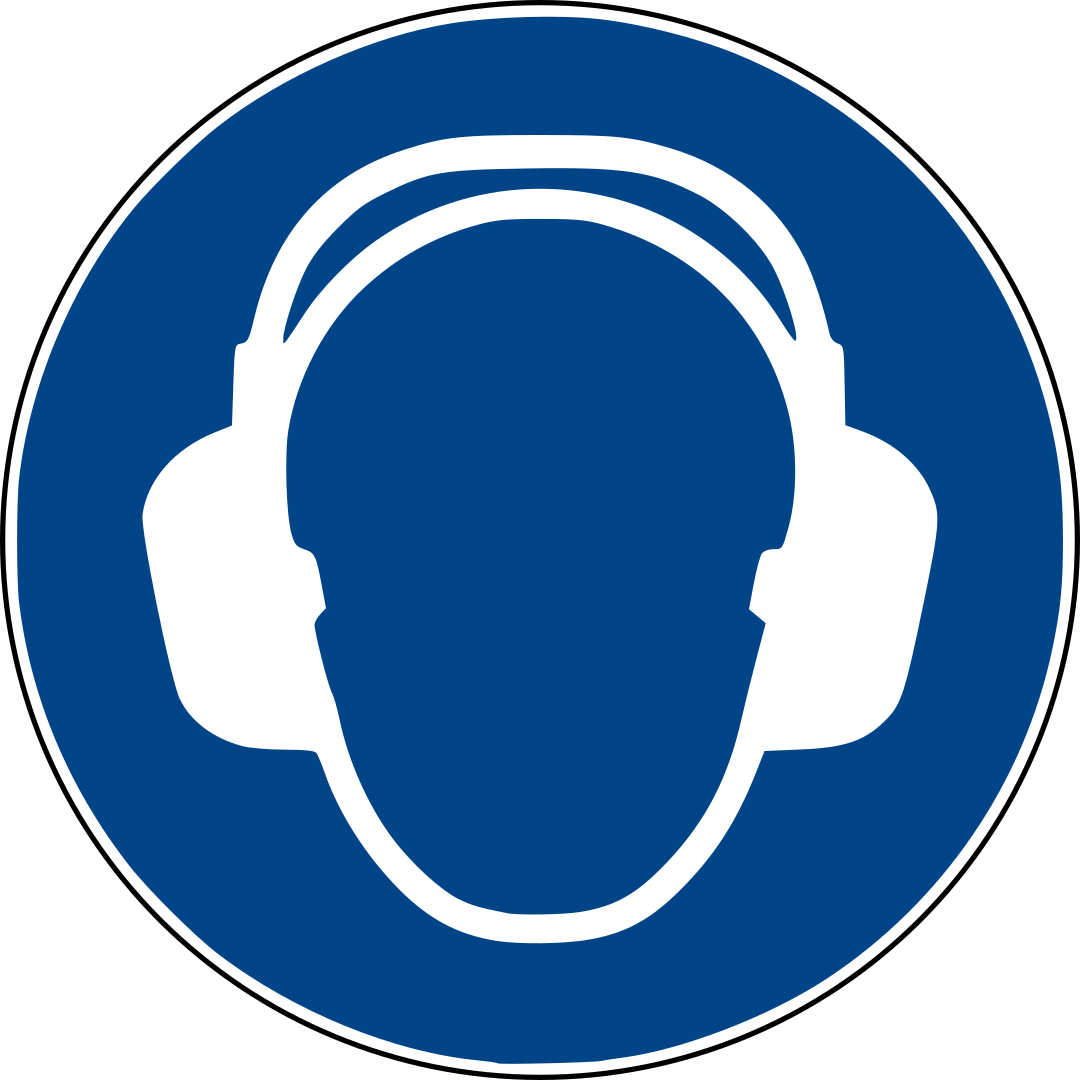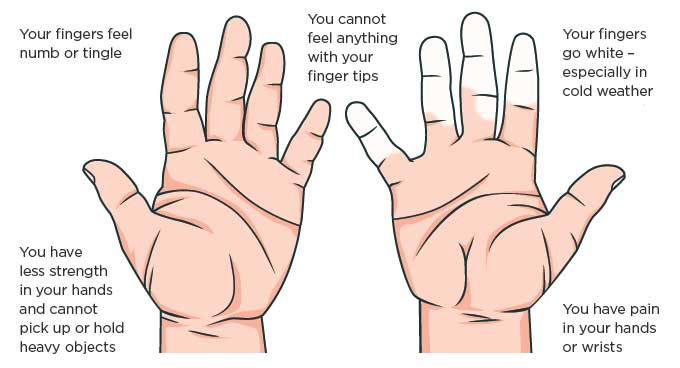You need to answer at least 27 out of 30 questions correctly to pass the Noise and Vibration Test for Operatives and Specialists. Answers may be reviewed after each question or at the end of the test. Good luck!
List of questions in above test (quick view). Click question box to reveal correct answer.
1. How can you reverse the effects of hearing loss?
Give ONE answer
AB
C
D
Correct Answer: D
Explanation: Hearing damage can be permanent and irreversible.
Explanation: Hearing damage can be permanent and irreversible.
2. How can you tell if you suffer from tinnitus?
Give ONE answer
AB
C
D
Correct Answer: C
Explanation: Tinnitus is experienced as a constant ringing or buzzing in the ears.
Explanation: Tinnitus is experienced as a constant ringing or buzzing in the ears.
3. Hearing loss as a result of noise exposure sets in:
Give ONE answer
AB
C
D
Correct Answer: D
Explanation: Hearing loss develops over a period of time.
Explanation: Hearing loss develops over a period of time.
4. What are two signs you may be developing hearing damage?
Give TWO answers
AB
C
D
Correct Answer: C, D
Explanation: You may be developing hearing damage if you are struggling to hear sounds at normal levels.
Explanation: You may be developing hearing damage if you are struggling to hear sounds at normal levels.
5. What is usually the main source of harmful noise on a construction site?
Give ONE answer
AB
C
D
Correct Answer: C
Explanation: Hand held tools are the most common sources of on-site noise.
Explanation: Hand held tools are the most common sources of on-site noise.
6. What are two damaging types of noise?
Give TWO answers
AB
C
D
Correct Answer: B, D
Explanation: Continuous noise and peak noise are damaging types of on-site noise.
Explanation: Continuous noise and peak noise are damaging types of on-site noise.
7. Which method of cutting holes will be LESS damaging to your hearing?
Give ONE answer
AB
Correct Answer: B
Explanation: A rotary diamond cutter is the safer option to protect your hearing.
Explanation: A rotary diamond cutter is the safer option to protect your hearing.
8. You were told in a briefing that an area requires hearing protection, but when you arrive there is no signage. What should you do?
Give ONE answer
AB
C
D
Correct Answer: D
Explanation: Always wear protection you have been instructed to, and report any missing signage to your supervisor.
Explanation: Always wear protection you have been instructed to, and report any missing signage to your supervisor.
9. You are in an area where hearing protection is mandatory, but you are on break. What is safe practice?
Give ONE answer
AB
C
D
Correct Answer: D
Explanation: Even short periods of noise can hugely increase your daily exposure. You should wear protection at all times in areas that require it.
Explanation: Even short periods of noise can hugely increase your daily exposure. You should wear protection at all times in areas that require it.
10. What are TWO requirements that must be met for earplugs to be effective?
Give TWO answers
AB
C
D
Correct Answer: A, B
Explanation: Earplugs must be properly fitted, and with clean hands, to prevent hearing damage and infections.
Explanation: Earplugs must be properly fitted, and with clean hands, to prevent hearing damage and infections.
11. What is the correct way to fit earplugs?
Give ONE answer
AB
C
D
Correct Answer: D
Explanation: Roll the plugs and insert them deep into the canal; this is easier if you pull the top of your ear to widen the canal.
Explanation: Roll the plugs and insert them deep into the canal; this is easier if you pull the top of your ear to widen the canal.
12. You are issued ear defenders, and the soft inner lining is torn on one side. What should you do?
Give ONE answer

B
C
D
Correct Answer: C
Explanation: You must not work in noisy areas without fully functioning ear protection.
Explanation: You must not work in noisy areas without fully functioning ear protection.
13. How can you tell if your ear defenders are fitted effectively?
Give ONE answer
AB
C
D
Correct Answer: A
Explanation: Ear defenders must seal tightly against your head. They are not effective if worn with glasses, and it is normal for them to become sweaty or uncomfortable after long periods of use.
Explanation: Ear defenders must seal tightly against your head. They are not effective if worn with glasses, and it is normal for them to become sweaty or uncomfortable after long periods of use.
14. What are the TWO noise levels at which an employer is legally obliged to take additional safety measures?
Give TWO answers
AB
C
D
Correct Answer: B, D
Explanation: The lower level is 80 dB(A) and the upper level is 85 dB(A).
Explanation: The lower level is 80 dB(A) and the upper level is 85 dB(A).
15. Your employer has designated an area as a mandatory hearing protection zone. Which noise exposure level does this suggest?
Give ONE answer
AB
Correct Answer: B
Explanation: Employers are legally required to make hearing protection mandatory when noise reaches the upper exposure action level. However, they may do so at any time.
Explanation: Employers are legally required to make hearing protection mandatory when noise reaches the upper exposure action level. However, they may do so at any time.
16. A colleague 2 metres away cannot hear you unless you raise your voice. What does this suggest?
Give ONE answer
AB
C
D
Correct Answer: B
Explanation: Having to raise your voice to be heard by someone 2 metres away suggests the noise levels have, at minimum, reached the lower exposure action level.
Explanation: Having to raise your voice to be heard by someone 2 metres away suggests the noise levels have, at minimum, reached the lower exposure action level.
17. Alongside hearing damage, what is ONE other major risk high noise levels can create?
Give ONE answer

B
C
D
Correct Answer: A
Explanation: High noise levels mask other sounds, such as alarms or warnings from reversing vehicles.
Explanation: High noise levels mask other sounds, such as alarms or warnings from reversing vehicles.
18. What dangerous health condition does this diagram illustrate?
Give ONE answer

B
C
D
Correct Answer: D
Explanation: This diagram illustrates symptoms of HAVS.
Explanation: This diagram illustrates symptoms of HAVS.
19. What is the principle cause of HAVS on site?
Give ONE answer
AB
C
D
Correct Answer: D
Explanation: Handheld tools are the biggest HAVS risk in construction.
Explanation: Handheld tools are the biggest HAVS risk in construction.
20. What does HAVS stand for?
Give ONE answer
AB
C
D
Correct Answer: B
Explanation: HAVS is a result of vibrational exposure to the hands and arms.
Explanation: HAVS is a result of vibrational exposure to the hands and arms.
21. Which of the following is NOT a symptom of HAVS?
Give ONE answer
AB
C
D
Correct Answer: D
Explanation: Numbness, tingling, burning, throbbing, and lack of manual dexterity in the fingers or hands are all signs you may be developing HAVS.
Explanation: Numbness, tingling, burning, throbbing, and lack of manual dexterity in the fingers or hands are all signs you may be developing HAVS.
22. What should you do if you have been drilling and your hands begin to tingle?
Give ONE answer
AB
C
D
Correct Answer: C
Explanation: Tingling fingers can be an early sign of HAVS, and suggest insufficient safety measures are in place. You must report this symptom before the condition worsens.
Explanation: Tingling fingers can be an early sign of HAVS, and suggest insufficient safety measures are in place. You must report this symptom before the condition worsens.
23. How is HAVS treated?
Give ONE answer
AB
C
D
Correct Answer: B
Explanation: HAVS is a permanent and progressive condition. It cannot be cured.
Explanation: HAVS is a permanent and progressive condition. It cannot be cured.
24. HAVS may present alongside which two additional conditions?
Give TWO answers
AB
C
D
Correct Answer: B, D
Explanation: The circumstances that cause HAVS may also cause carpal tunnel syndrome and tennis elbow.
Explanation: The circumstances that cause HAVS may also cause carpal tunnel syndrome and tennis elbow.
25. Which TWO of the following is your employer legally obliged to do regarding your daily vibration dose?
Give TWO answers
AB
C
D
Correct Answer: A, C
Explanation: Your employer must ensure you do not receive damaging vibration dosages, and must furnish you with usage limit information.
Explanation: Your employer must ensure you do not receive damaging vibration dosages, and must furnish you with usage limit information.
26. What TWO steps can you take to limit the risk of developing HAVS when using hand held tools?
Give TWO answers
AB
C
D
Correct Answer: A, B
Explanation: You can protect yourself by loosening your grip, and exercising your hands. This reduces vibration damage, and promotes blood flow.
Explanation: You can protect yourself by loosening your grip, and exercising your hands. This reduces vibration damage, and promotes blood flow.
27. What should you expect from your employer regarding information about the risks of vibration exposure?
Give ONE answer
AB
C
D
Correct Answer: C
Explanation: Employers should ensure you receive clear training and information regarding vibration exposure at work.
Explanation: Employers should ensure you receive clear training and information regarding vibration exposure at work.
28. Why will an employer begin health surveillance of an employee who is exposed to high vibration levels?
Give ONE answer
AB
C
D
Correct Answer: B
Explanation: Employers must begin health surveillance under these circumstances to ensure the employee is properly protected.
Explanation: Employers must begin health surveillance under these circumstances to ensure the employee is properly protected.
29. What kind of gloves might you wear to reduce the risk of developing HAVS?
Give ONE answer
AB
C
D
Correct Answer: C
Explanation: "Anti-vibration" gloves are not recommended. They usually have minimal or no effect, and may increase damage; keeping hands warm provides better protection.
Explanation: "Anti-vibration" gloves are not recommended. They usually have minimal or no effect, and may increase damage; keeping hands warm provides better protection.
30. Poor circulation in your fingers persists beyond winter, and your doctor diagnoses you with HAVS. Should you tell your employer?
Give ONE answer
AB
C
D
Correct Answer: D
Explanation: You must inform your employer, because they are legally obliged to report this to the HSE.
Explanation: You must inform your employer, because they are legally obliged to report this to the HSE.
